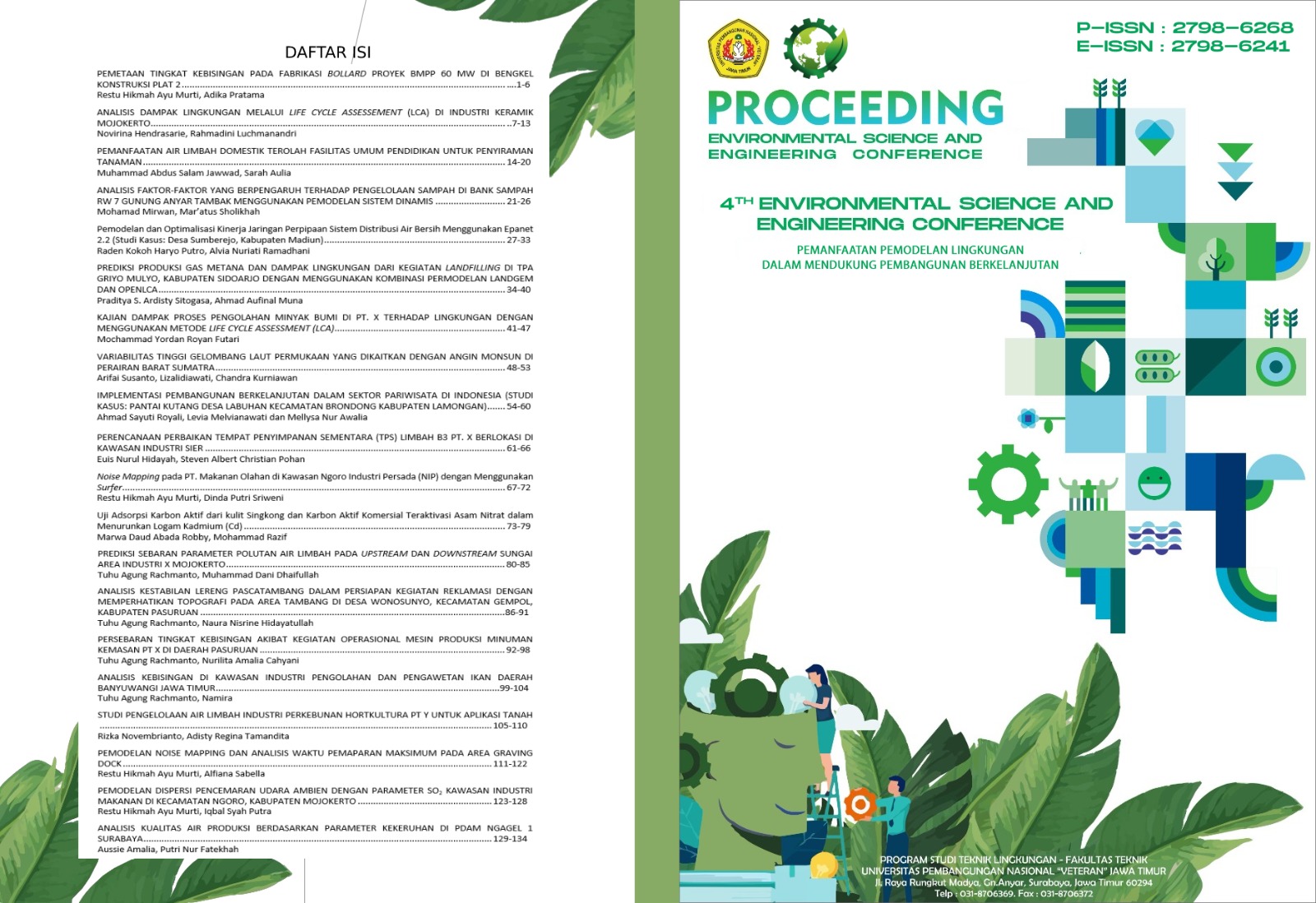Uji Adsorpsi Karbon Aktif dari Kulit Singkong dan Akrbon Aktif Komersial Teraktivasi Asam Nitrat dalam Menurunkan Logam Kadmium (Cd)
Keywords:
batch adsorption, cassava peel activated carbon, Cadmium (Cd) metalAbstract
The adsorption method has a simpler and more economical concept when compared to other methods of reducing cadmium metal. In general, commercial activated carbon is used; however, the price is quite expensive, so development is being carried out to find alternative adsorbents, including activated carbon from cassava peels. This study determined the characteristics, removal efficiency, and adsorbent mass effect. It also investigated isotherm models of commercial activated carbon and cassava skin-activated carbon. The research variables consisted of activated carbon derived from cassava peels and commercial activated carbon in adsorbent masses of 3 gr, 6 gr, 9 gr, and 12 gr. Contact time varied between 30, 60, 90, and 120 minutes, while cadmium concentrations varied between 2 ppm, 4 ppm, 6 ppm, and 8 ppm. Based on SNI 06-3730-1995, the content value of cassava skin activated carbon was fulfilled, except for the volatile matter and bound carbon contents, while the content value of commercial activated carbon was not fulfilled except for the water content. The results of the BET testing indicated that cassava peel-activated carbon had a surface area of 151.360 m2/g, while commercial-activated carbon gained 251.648 m2/g. The highest removal efficiency of cassava skin-activated carbon occurred at a mass of 9 grams, a contact time of 90 minutes, and a concentration of 8 ppm at 95%, while commercial activated carbon was 96%.
Downloads
Published
Issue
Section
License
Copyright (c) 2023 Marwa Daud Abada Robby

This work is licensed under a Creative Commons Attribution 4.0 International License.













 ISSN 2798-6241
ISSN 2798-6241 





